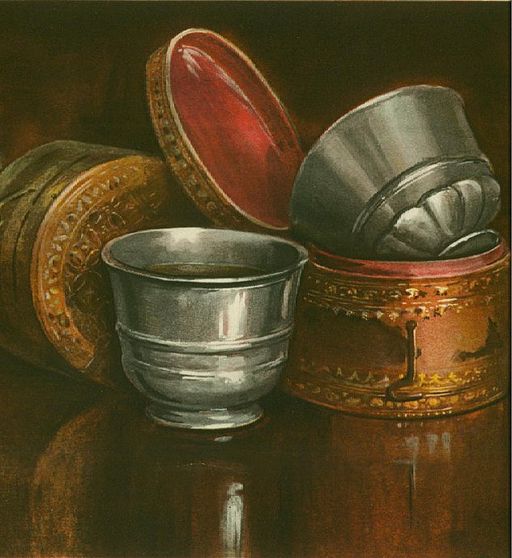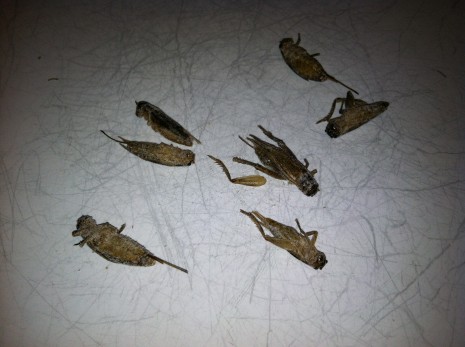During the first World War, British soldiers were issued toothbrushes. Many didn’t know what they were, and used them to clean their boots.
Presidential Poxes
 A great many U.S. Presidents suffered from insect-borne illnesses, and malaria was one of the most frequent afflictions. Presidents who most likely had malaria included George Washington, James Monroe, Andrew Jackson, Zachary Taylor, Abraham Lincoln, Ulysses S. Grant, James Garfield, Theodore Roosevelt, and John F. Kennedy—he probably contracted the disease while stationed in the Pacific during World War II.
A great many U.S. Presidents suffered from insect-borne illnesses, and malaria was one of the most frequent afflictions. Presidents who most likely had malaria included George Washington, James Monroe, Andrew Jackson, Zachary Taylor, Abraham Lincoln, Ulysses S. Grant, James Garfield, Theodore Roosevelt, and John F. Kennedy—he probably contracted the disease while stationed in the Pacific during World War II.
party on
The word “partied” was first used as a verb by E.E. Cummings in 1922.
NYT 2/16/14
Heads Up
When King Henry II of France was pierced through the eye and brain in a jousting tournament in 1559, his doctors experimented ways to treat the injury by using the decapitated heads of recently executed criminals. The wound, however, proved fatal.
Source: Leonie Frieda Catherine de Medici page 5
Open Up
The first patented can opener was created in 1858 by Ezra J. Warner of Waterbury, Connecticut.
Just Passing Through
 I’m researching a new book, and have been spending a lot of time reading about the history of medicine, and various methods that were used to cure ailing patients. Sometimes the treatments did a lot more harm than good (see my posts on George Washington and Charles II, to name just two examples). Included in physicians’ arsenals were blister poultices, purgatives, and emetics. I’ve blogged before about blister poultices—topical irritants that were often made from crushed up blister beetles. Today’s post? Emetics and purgatives.
I’m researching a new book, and have been spending a lot of time reading about the history of medicine, and various methods that were used to cure ailing patients. Sometimes the treatments did a lot more harm than good (see my posts on George Washington and Charles II, to name just two examples). Included in physicians’ arsenals were blister poultices, purgatives, and emetics. I’ve blogged before about blister poultices—topical irritants that were often made from crushed up blister beetles. Today’s post? Emetics and purgatives.
An emetic is something that makes you throw up. A purgative is a laxative–something that causes you to empty your bowels. Both have been around a long time.
One way to induce vomiting was with an antimonial cup—many seventeenth and eighteenth century households had one at the ready. It was a small cup made of antimony into which wine was poured. After about eight hours, the patient would drink the wine. Because the antimony would have leached into the wine, the patient would begin to vomit. You can read an account of an “antimonial Cupp” here, in Gentleman’s Magazine volume 102 (1832).
But let’s move on to purgatives. According to Joel Levy in Poison: An Illustrated History, antimony was also used as a purgative, in the form of a so-called “perpetual pill.” The patient swallowed a pellet of antimony, which irritated the digestive system enough to induce rapid evacuation of the bowels. But the pill itself passed through the person’s system unscathed. It would be “recovered,” washed, and reused. Sometimes perpetual pills would be passed from one generation to the next.
Mercury was also a popular purgative. You can read my post about the Lewis and Clark expedition’s reliance on “thunderclappers” here—high-octane laxatives made of sixty percent mercury.
image: Antimonyall Cupps from Wikimedia
Snacks with Six Legs
 Last week I ate a bug on purpose.
Last week I ate a bug on purpose.
It was a dry-roasted cricket.
One of the central tenets of my Bugged book is that we should all eat more insects, as they’re a good source of protein and leave less of a footprint (literally) than beef and pork, etc. So Jack and Olivia, two advanced video students from my husband’s high school who are helping me with my book trailer, filmed me offering a tray of dry-roasted crickets and chocolate covered mealworms to kids. What amazed me was how many kids were amped to try them. Teachers, too. My friend, Jim, who teaches AP environmental science, exuberantly crunched several for the camera while holding forth to his class full of students about the importance of eating insects. He was very compelling in his lab coat and bow tie and fluorescent yellow safety goggles. And then we filmed my friend, Will, who pretended to be engrossed in a phone conversation while popping bug after bug into his mouth. He was awesome.
I even got Jack to show me how to work the camera so that I could film him and Olivia eating a cricket. So perhaps they’ll be in the final cut!
Then in the spirit of artistic integrity I thought it only right that I try one. It was . . . fine. If you can get past the skeeve factor, it really isn’t that big a deal. I suppose a roasted cricket is mild in the entomophagy continuum, a gateway bug if you will—it’s not like a live, wriggling grub or anything.
I’ll post the trailer as soon as it’s edited.
Channel of Love
The custom of wearing a wedding ring on the third finger stems from the ancient Greeks, who believed a “vein of love” ran from that finger to the heart.
Panati’s Extraordinary Origins (24)
Paul Gauguin, Company Man
 In 1879 the French government began an ambitious project to dig a forty-mile canal across the Isthmus of Panama, which would allow passage between the Atlantic and Pacific Oceans. The project was a disaster. Workers lived in squalor and died in droves from yellow fever and malaria in the hot, buggy, rainy climate. The architects of the project deemed it cheaper to replace dead workers than to try to improve their working conditions, and at the time, no one knew that malaria and yellow fever were transmitted by mosquitoes. After eight years, over 22,000 workers were dead, and the French abandoned the project.
In 1879 the French government began an ambitious project to dig a forty-mile canal across the Isthmus of Panama, which would allow passage between the Atlantic and Pacific Oceans. The project was a disaster. Workers lived in squalor and died in droves from yellow fever and malaria in the hot, buggy, rainy climate. The architects of the project deemed it cheaper to replace dead workers than to try to improve their working conditions, and at the time, no one knew that malaria and yellow fever were transmitted by mosquitoes. After eight years, over 22,000 workers were dead, and the French abandoned the project.
In 1887 the painter Paul Gauguin travelled to Panama to work on the canal. His plan was to earn enough money to paint. But after two weeks of forced labor and wretched working conditions, he left.
President Theodore Roosevelt bought the rights to the project in 1903, but by that time, thanks to the work of Ronald Ross and Walter Reed, scientists knew that the mosquito was the vector of both malaria and yellow fever. After vigorous mosquito abatement efforts, the rates of disease fell dramatically and the project was completed.
Sealed with an X
The custom of signing notes “XXX” to symbolize kisses may originate from the days when people who couldn’t write signed their names with an X. They often kissed the mark to emphasize their sincerity.